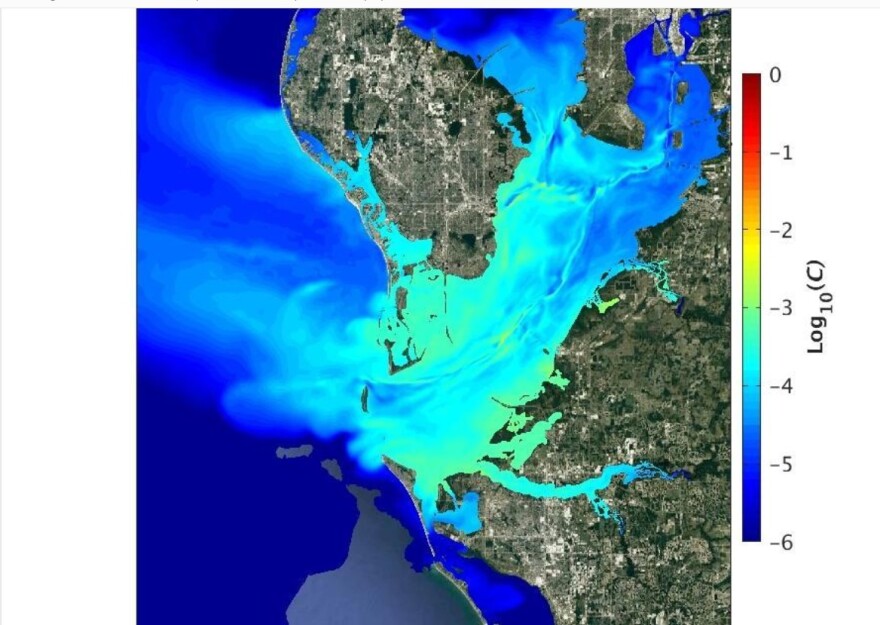The effects of polluted water released from the Piney Point phosphate plant into Tampa Bay have diluted over time. That's according to researchers from the University of South Florida College of Marine Science.
More than 200 million gallons of water from a reservoir was released beginning in late March. Scientists have found concentrations of chlorophyll and other nutrients have declined since then, with wind and tides spreading the contamination throughout lower Tampa Bay.
Dean Thomas Frazer of the College of Marine Science said they're seeing a decline in the amount of nutrients from the original release.

"As we continue to sample the waters, not only in the immediate vicinity of Port Manatee in southern Tampa Bay, but in other reference areas," he said, "I think that what we're seeing is there continues to be a dilution and decline in some of those important chemical constituents."
Frazer said although red tide has been spotted recently at the mouth of Tampa Bay, it likely was not caused by Piney Point, but rather brought there from the south by prevailing winds.
"There are low to background concentrations of red tide organisms in the southern part of the bay right now, but I think it would be premature to draw a cause and effect relationship between those two things," he said.
Scientist say detailed studies of how metals and toxic compounds affected marine life won't be completed for several more weeks.
Here's more information from the USF College of Marine Science:
- Early results indicate that the effects of the wastewater discharge were localized in nature, not widespread.
- Concentrations of nutrients have declined over time and are now more typical of those in the historical record for this part of Tampa Bay. Model results show that the concentrations of nutrients within the discharged water have been diluted at least 1000-fold since the initial release.
- A diatom bloom of about 25 square kilometers in size around Port Manatee that formed in response to the discharge has dissipated over time. Diatoms are single-celled microalgae called phytoplankton. Chlorophyll concentrations (a proxy for phytoplankton biomass) are within the range generally observed in Tampa Bay during April and May.
Remaining unanswered questions for researchers:
- Are longer-term impacts of the discharged water on the Tampa Bay ecosystem likely to be manifested? If so, how?
- The nutrient chemistry of Tampa Bay is complex. Questions remain about nutrient cycling in response to a rapid influx of wastewater. For example:
- Were nutrients and heavy metals (e.g., lead, copper, zinc) from the discharge sequestered in the sediments? If so, will storms stimulate phytoplankton blooms?
- Will there be an impact to seagrasses and other marine life that live on the bottom?
- What may have been the impact to fish health?
“The area in the immediate vicinity of Port Manatee was subject to a spike in nutrient concentrations and a corresponding increase in phytoplankton abundance,” Frazer said.
“Our initial field sampling efforts and data acquired from remote sensing platforms confirmed high concentrations of chlorophyll, which is a proxy for phytoplankton abundance. Recent data indicate, however, that the response was short lived. Phytoplankton abundance continues to decline and water chemistry values are typical of those reported in the historical record.”






